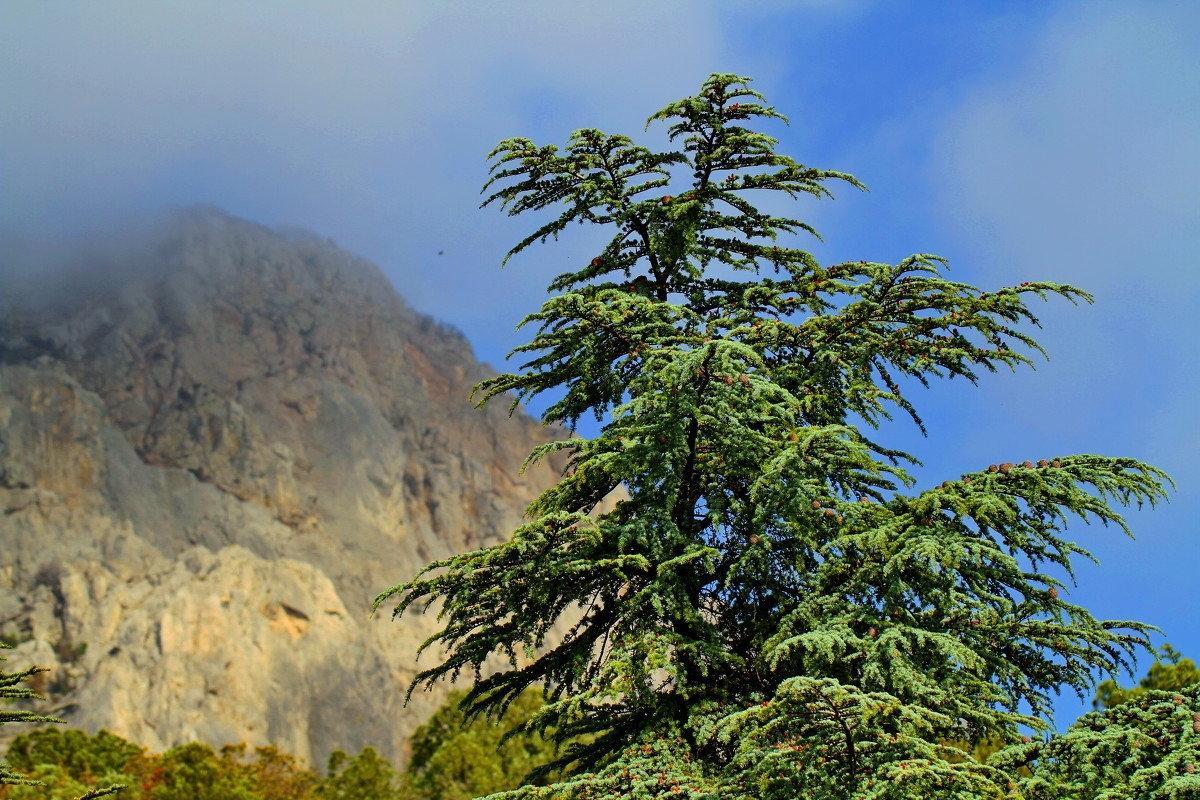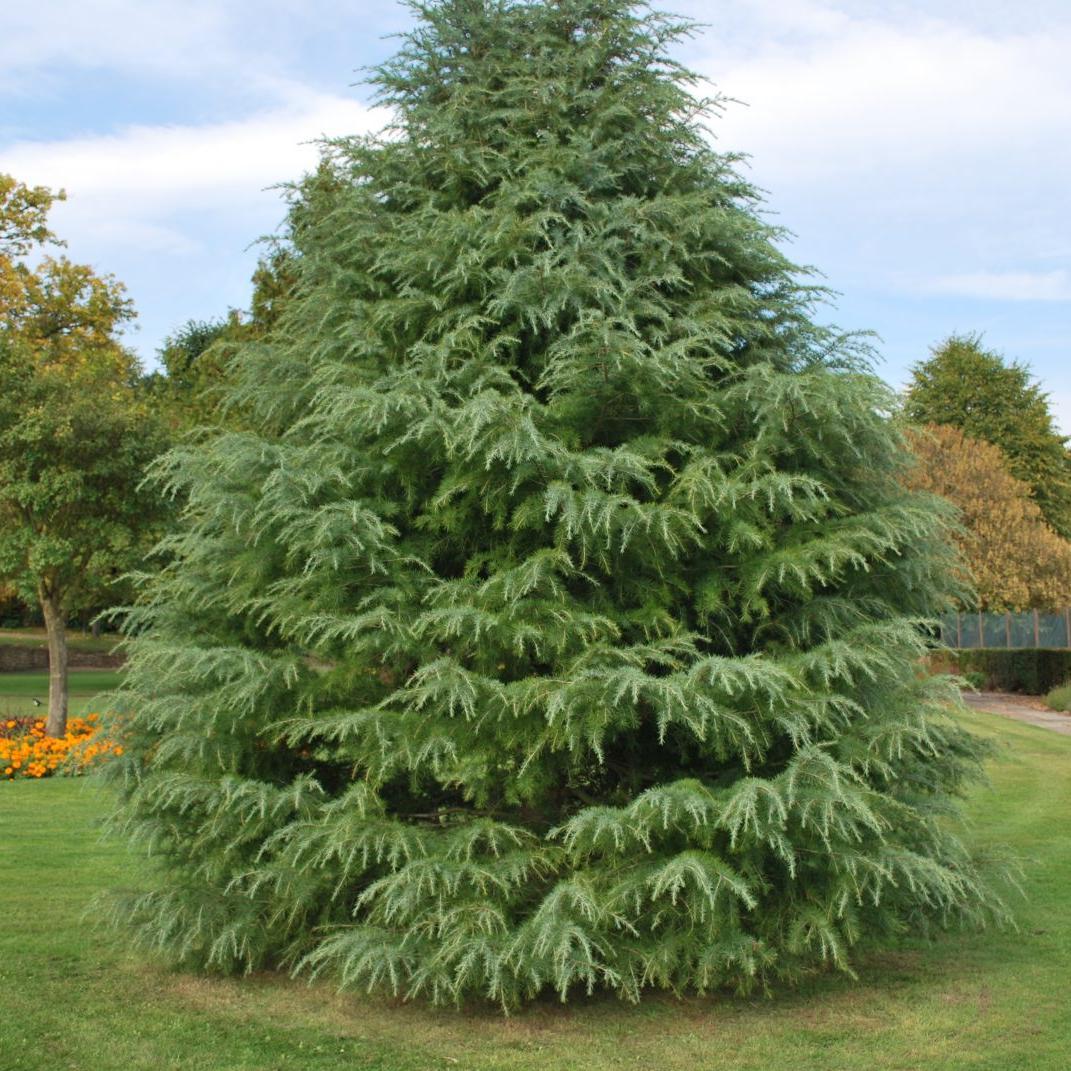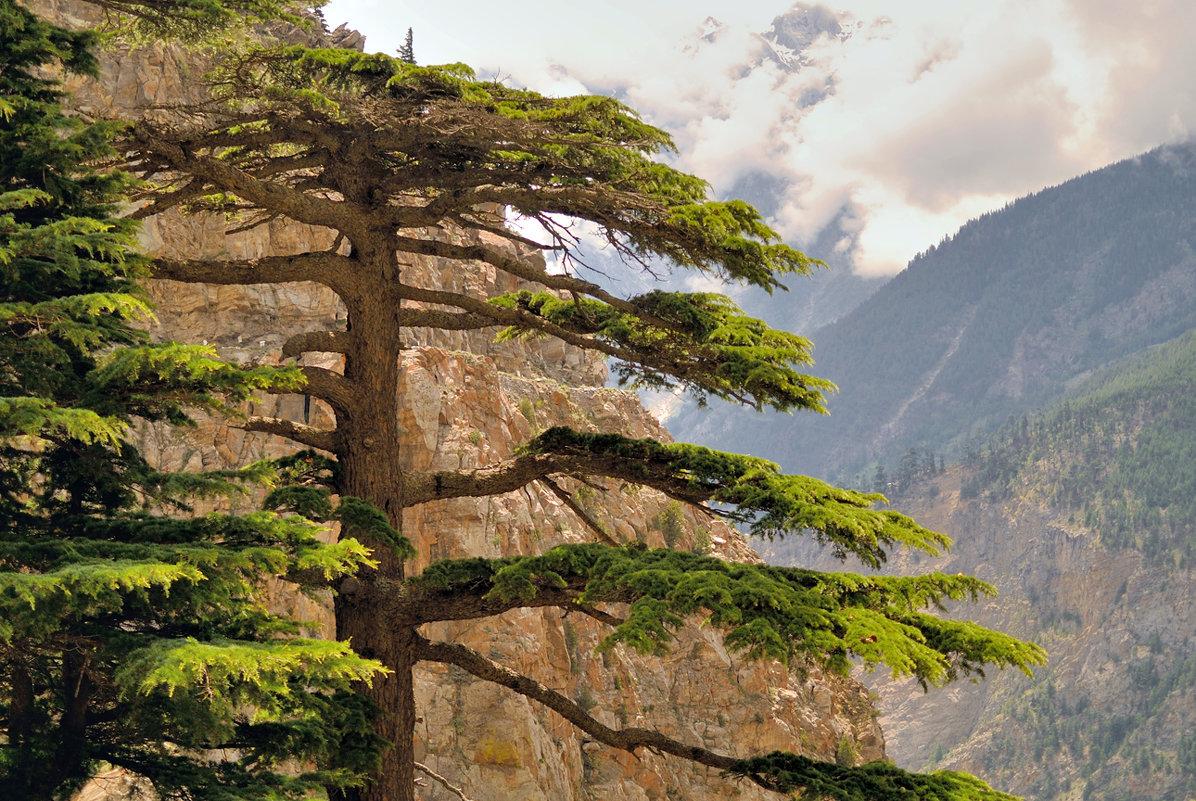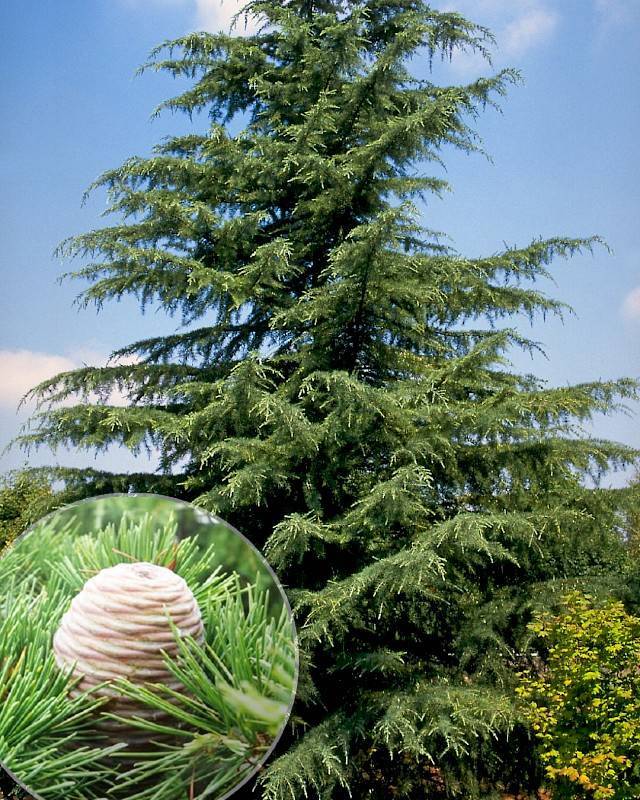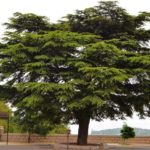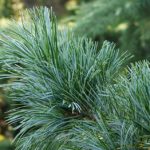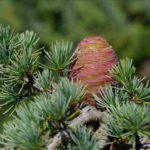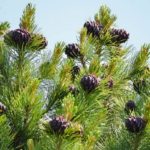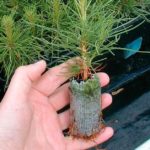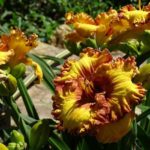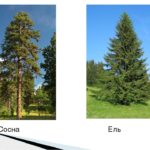Himalayan cedar is a luxurious conifer that grows without problems in areas with warm and humid climates. This tree is considered a real long-liver. It can become a decoration of a summer cottage or park for many years. At the same time, the plant will become more and more attractive every year. In order for a culture to develop well, it needs to be properly cared for.
Description of the tree
Himalayan cedar is a very beautiful representative of the Pine family. The culture grows in the mountainous regions of Central Asia. It is also available in India, Pakistan and Afghanistan.In addition, the plant is often found in European countries - Austria, Czech Republic, Germany.
Under natural conditions, the culture can live up to 1000 years. At the same time, it will retain its decorative properties and majestic appearance. Some of the plants are located at an altitude of 3-3.5 kilometers above sea level.
In the early years, Himalayan cedar is characterized by rapid growth rates. With age, the rate of its growth gradually slows down. A mature tree can reach a height of 50 meters. Moreover, in diameter it exceeds 3 meters. The young culture forms a wide cone-shaped crown, which has a rounded top and no tiers. Mature plants are characterized by a more rounded crown.
The branches are located at right angles to the trunk, and the ends droop towards the ground. Himalayan cedar needles form spirals. Moreover, it can be presented in the form of long single needles or form bundles. The needles have a glossy shine. Moreover, their color can be different - from green to bluish.
Female pine cones are similar in shape to an elongated barrel, the diameter of which is 5-7 centimeters and the length is about 13. As they ripen, which lasts 1.5 years, the fruits change color from blue to brick or reddish-brown. At 2-3 years, the scales open, which helps the ripened seeds fall out. They resemble the shape of a white egg, 17 millimeters long and up to 7 millimeters wide.
Each seed has a light brown shiny wing. This allows it to spread over considerable distances and sprout hundreds of meters from the parent culture. It is worth considering that Himalayan cedar is characterized by inedible seeds.
Common varieties
This culture has excellent decorative properties. Therefore, based on it, breeders are constantly developing new varieties that differ in needle color, durability, and growth characteristics. Below is a description of such cedars:
- Feeling Blue is a dwarf creeping crop, which by the age of ten does not exceed 60 centimeters in height. In warm areas the plant can reach 1.5 meters. The culture is actively growing in breadth. Over the course of a year, it can increase by 30-40 centimeters. Thanks to this, the plant forms beautiful weeping forms. The width of an adult plant can reach 3 meters. This variety is characterized by long, soft, silver-blue needles. Frost resistance parameters reach -27 degrees.
- Golden Horizon - the annual growth of this plant is 30 centimeters. At the same time, the culture is able to withstand temperatures dropping to -29 degrees. Young plants have the shape of a fountain-like bush. Subsequently, the trunk develops more actively, as a result of which the crop acquires a pyramidal shape with weeping branches. This plant is characterized by long and soft needles. In spring and summer, the needles have a golden yellow hue. With the arrival of autumn, the needles become greenish or grayish.
- Karl Fuchs is the most frost-resistant variety, able to withstand temperatures down to -30 degrees. It is characterized by bluish needles and a narrow crown. The culture is characterized by rapid growth.Over the course of a year, it increases by 30 centimeters. By the age of 30, the tree reaches 10 meters. Moreover, its maximum height is 20 meters. Young shoots are almost blue in color. With age they turn green, but the pronounced blue tint remains.
- Electra - this variety is characterized by slow development and unusual color. Shaded needles reach a length of 2-3 centimeters. At the same time, the needles inside the bush have an almost blue color, and the outer needles have a silver-blue tint. The crown also has an unusual shape. The lower branches rise high and are located almost parallel to the trunk. However, gradually the shoots seem to deviate from the central part and take on an almost horizontal position. The shrub is characterized by a symmetrical shape that approaches a clear cone. However, the lush needles make the appearance of the crop very original. The plant is resistant to lime and has a high degree of hardiness. It easily withstands pruning and can tolerate frosts down to -27 degrees.
- Snow Sprite is a rather original variety. It seems that its needles are dusted with snow. Young shoots are distinguished by their ivory color, which further draws attention to the sophistication of the crown. As the tree develops, the branches turn creamy yellow. The average height of the tree is 4-8 meters. It is best to plant the crop in partial shade. This helps to emphasize the decorative nature of the needles.
- Pendula is a weeping plant characterized by flowing branches. They are so expressive that they are associated with fairy tale motifs. This plant is characterized by dark green needles with a bluish tint. It is quite long and reaches 3-4 centimeters.The culture has beautiful purple cones that grow up to 7 centimeters. This variety can withstand frosts down to -25 degrees.
Landing
It is recommended to move seedlings of this plant to a permanent site after 3 years. Himalayan cedar should be placed in a well-lit area or in a slightly shaded area. The crop is considered not too demanding on the soil composition, but it develops best in light loams with good drainage and deep groundwater.
It is recommended to prepare a hole for Himalayan cedar 3 weeks before planting. The soil should be dug up within a radius of 3 meters from the planting site. In this case, the dimensions of the recess should be 1.5-2 times larger than the earthen lump. The soil should be mixed with peat and wood ash. It is also permissible to add rotted manure and sand to the substrate. The resulting mixture must be left in the hole so that it settles.
It is recommended to carry out planting work in early spring, when the buds on the branches remain dormant. When planting Himalayan cedar in the fall, it is worth considering the appearance of deciduous trees. They should completely shed their leaves.
To plant a plant, the seedling must be carefully removed from the container and placed in the hole at a slight angle. In this case, it is recommended to carefully straighten the twisted root system. The young seedling should be sprinkled with a nutrient substrate, compacted and watered well. After this, it is recommended to sprinkle the tree trunk circle with a layer of mulch.
Aftercare
It is necessary to moisten Himalayan cedar in the summer in such a way that the soil does not dry out. However, it is important to avoid stagnation of moisture. Nutrients should be added 3 times during the season. This is recommended to be done from the end of April.
Until mid-August, the plant should be fed with combined minerals that contain a lot of nitrogen. Starting in July, it is recommended to use drugs that include phosphorus and potassium.
Periodically it is necessary to loosen the tree trunk circle. During the procedure, it is imperative to get rid of weeds. After loosening, the tree trunk circle is covered with a mulch layer. For this, it is recommended to use forest litter made from hazel or birch. It is also worth using peat, compost, sawdust. Every spring, the mulch needs to be removed and replaced with a new one.
As for pruning, Himalayan cedar only requires a sanitary procedure, during which it is recommended to remove injured and dried branches. The procedure should be carried out in the spring. This is done before new shoots appear. Radical curly haircut is carried out in September. Thanks to this, the Himalayan cedar will have enough time to recover.
When growing a crop in temperate latitudes, it is important to protect it from the cold. This is especially true for young crops. When the temperature drops to 0 degrees, cedar should be insulated. To do this, the tree trunk circle needs to be covered with a mulching layer of sawdust and spruce branches placed in it.
It is recommended to tie the tree branches with twine or wrap them with netting. This will help prevent them from breaking under the weight of snow.Young plants that have not yet fully formed roots need to be secured with guy wires. Ordinary burlap is ideal as an insulating material. The fact is that nonwoven materials can provoke damping off of the crop.
How to propagate a tree
In nature, the tree reproduces by self-seeding. However, it is also possible to obtain a new crop on the site through grafting. However, most often the plant is propagated by seed. Planting material does not need stratification. To stimulate its germination, soaking in warm water for 2-3 days is enough. Some gardeners place soaked seeds in moistened sand and place them in the refrigerator for a month - on the bottom shelf.
Then it is recommended to plant the seeds in containers filled with a mixture of peat and sand. They need to be covered with film and placed in a room at room temperature. In such conditions, the crop should be grown for 2-3 years.
Possible pests and diseases
Himalayan cedar is characterized by strong immunity and is rarely affected by diseases or pests. With quality care, the likelihood of developing pathologies is low. However, sometimes the crop still suffers from various types of rot. Among the pests, it is susceptible to attacks by moths, moths, sawflies, and codling moths. When a tree is damaged, it is necessary to apply fungicides and insecticides.
Application of wood
Low varieties of Himalayan cedars are usually used to decorate summer cottages. Large trees are predominantly planted in city parks. In any case, this culture has excellent decorative properties and a high degree of endurance. It can be used to solve the following problems:
- creation of alleys;
- location near large-sized trees;
- hedge formation;
- decorating recreation areas in city parks;
- creating compositions with flowering plants;
- combination with various types of conifers;
- growing near residential buildings or office buildings;
- planting as a tapeworm in the center of the lawn.
Himalayan cedar is a fairly popular decorative crop that fits well into various landscape compositions. In order for the plant to develop normally, it needs to be properly cared for. At the same time, it is important to water the plant in a timely manner, add nutrients, and carry out sanitary pruning. Of no small importance is preparing the crop for winter and providing complete protection from diseases and pests.

